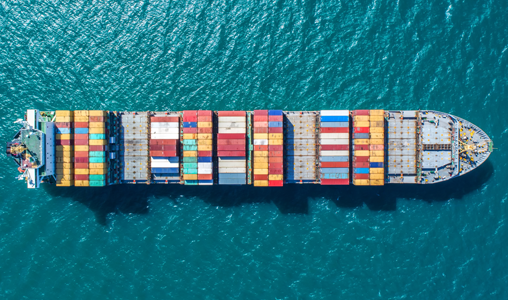Over the last decade, attention has been increasingly focused on sustainability within the shipping agenda. Environmental, social and governance (ESG) issues are now having a significant impact on decisions relating to financing, fleet renewal and regulatory changes across the sector. If we think that shipping generates 2.3% of global CO2 emissions (the global transport sector accounts for 24%), it is clear that the environmental footprint of the shipping sector is quite small compared to the huge volumes of goods transported around the world. For this reason, shipping remains the most efficient means of transport from an environmental point of view. However, shipping decarbonisation remains a daunting challenge, for which an estimated $3 trillion's worth of investments is expected to be required.
This is a priority for the UN, which in 2018 set an ambitious target for the sector through the IMO (International Maritime Organisation): to reduce CO2 intensity in the maritime transport by 40% by 2030 and by 70% by 2050 and, in addition, to reduce its greenhouse gas emissions by 50% by 2050, compared to 2008. The pressure to go beyond the current IMO targets is increasingly strong, so much so that in 2021 the European Union, with the "Fit for 55" package set the goal of reducing its greenhouse gas emissions by at least 55% by 2030, compared to the 1990 level.

The analyses conducted by SRM (Research centre associated with the Intesa Sanpaolo Group)1 highlight that the green transition of the shipping industry has got underway. Indeed, considering the data relating to the order book of new vessels, 2022 witnessed a significant growth in orders for alternative fuel vessels, which account for 60% of the total capacity ordered. Out of the different fuels and technologies available to the shipping industry (LNG, hydrogen, ammonia, LPG, methanol, biofuels and batteries) LNG has continued to be the most popular choice, but there has also been growing interest in methanol. As of February 2023, alternative fuel vessels account for 5.1% of the fleet at sea (in terms of tonnage, GT) and 46.4% of the order book2. In particular, in the container segment, the share of "alternative" fuel powered ships in the order book exceeded 40% for the first time. LNG dual-fuel container ships make up 20% of the order book, while methanol-powered 12%3.
Many container carriers are investing in alternative fuels, just to name a few: China's Cosco Shipping ordered 12 24,000 TEU methanol-powered dual-fuel container ships worth around $2.9 billion shared among its shipping container units, OOCL and Cosco Shipping Lines – for 7 and 5 vessels respectively. The Danish Maersk announced in October the order for 6 17,000 TEU methanol-powered dual fuel container ships. The new units, to be delivered in 2025, will be added to the others of the same type that the Danish group has recently commissioned and will receive in the same year (19 in total). The French CMA CGM announced that it has placed orders for 10 LNG dual-fuel container ships and 6 methanol-powered vessels, bringing its order book to 69 vessels. The Swiss liner MSC has placed a very large order of 28 LNG container ships with a total cost of almost $3.5 billion. Furthermore, the order book for 3 LNG-powered cruise ships is worth EUR 3 billion. The first delivery took place in October 2022: the MSC World Europa is the first cruise ship in the world to be equipped with the brand new LNG fuel cell technology.
The still uncertain timing of the transition represents an enormous challenge for the shipbuilding industry, thus posing a risk for operators who have to make investments lasting over a span of 20-30 years. This means that we will likely have to wait until 2030 to see a significant shift to clean fuels. It is a path that generates opportunities but which is also very complex due to a series of technical and logistical implications. First of all, adapting the fuel systems to the use of alternative fuels requires the presence of adequate support logistics, i.e. the necessary infrastructure at ports and maritime terminals. Therefore, a ready and organised supply chain is also needed on the ground side.
A further critical issue is represented by the difficulty of finding the chosen type of fuel outside set routes. In a scenario characterised by a number of unknown variables, it is challenging to make "green-oriented" choices and in synergy between the different stakeholders of the maritime and port cluster.
Intesa Sanpaolo, with the IMI Corporate & Investment Banking Division, is increasingly involved in these green issues and developments, in support of Italy's economy and businesses.
The bank works alongside its clients not only as a lender but also to share its expertise, as well as to facilitate third-party investments and aggregate the various stakeholders, thanks to its strong presence in Italy and its wide international presence.
In particular, the Division is actively participating in the European round tables that deal with the definition of new standards for the decarbonisation of the shipping and aviation industry, such as for example the RLCF Alliance, for which we chair the working group in charge of project bankability.
1 For further information: www.sr-m.it
2 SOURCE: Clarksons
3 SOURCE: Alphaliner